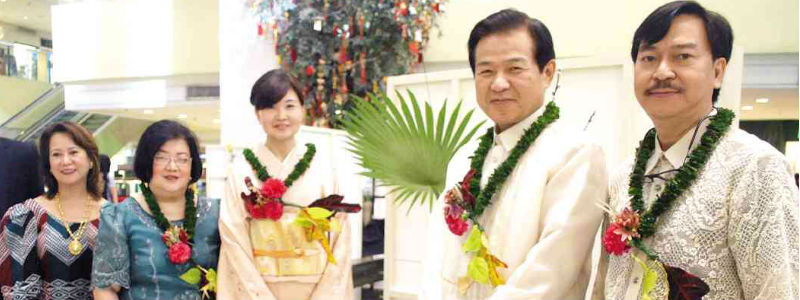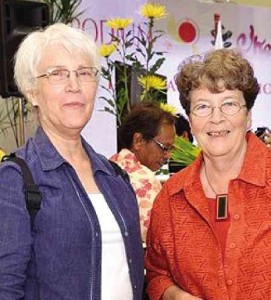
chair Romeo P. Balderrama Jr.

Like most things the Japanese make, the Ikebana style of flower arrangement is minimalist, uncluttered, exquisite and elegant. It is also inextricably linked to nature.
Originating in Kyoto, Japan, as Ikenobo, a floral offering to Buddha, the more modern Ikebana may seem far removed from its roots. But Ikebana professor Takashi Moribe, who graced the recent 30th anniversary celebration of the Ikenobo Ikebana Society of Manila No. 67 (IISM67), said the underlying principle remained the same.
He said arrangements that followed the Ikebana tradition had to have three elements. People who might have had some lessons in different styles of flower arrangement would be familiar with the typical elements—heaven, man and earth—the three forming a triangle of “religious significance,” as Filipino Ikebana professor Serapion Metilla, IISM67 adviser and past president, noted.
But apparently the three elements, in the evolution of Ikebana, need not be just heaven, man and earth. In the anniversary exhibit mounted by IISM67 at Shangri-La Plaza Mall, Moribe pointed to an almost all-flower arrangement which, he said, signified past, present and future.
Free style

And then there is Jiyuka, or free style. Moribe said this was based on “just the feeling” of the arranger and did not necessarily have to contain three elements. But even Jiyuka, unlike the typical mass flower arrangements more popular among Filipinos who prefer volume and a riot of colors, is still symmetrical, minimalist and more disciplined in execution.
Moribe, whose visit was arranged by the Japanese embassy, complimented Filipinos for “being like the Japanese” in their appreciation of nature, particularly flowers. As in Japan, floral arranging is a hobby, an occupation or even a profession in the Philippines.
A day before the exhibit, Moribe had a demonstration at Podium which, according to Eileen Siwa, one of those who attended, showed that Filipinos had learned well the basics of Ikebana flower arrangement.
Moribe also introduced the mini Rikka. Metilla described Rikka, which Moribe said had nine branches, as having “a complex and varied composition… with many branches and flowers” showcasing the magnificence of nature.
“Although the materials contrast with each other, they tend to interact, creating balance and varied harmony,” Metilla added.
Miyuki Takewaka, wife of the Japanese embassy deputy chief of mission and guest speaker during the exhibit’s opening ceremonies, said Ikenobo, which had a long history in Japan, “was [about] nature appreciation through minimalist use of flowers” and a prudent use of space. She added that the exhibit was a celebration of the perfect harmony of nature and of two countries, Japan and the Philippines.
IISM67 is headed by Linda C. Limpe as chapter president. Dr. Romeo P. Balderrama was overall organizing chair of the 30th anniversary celebration.

